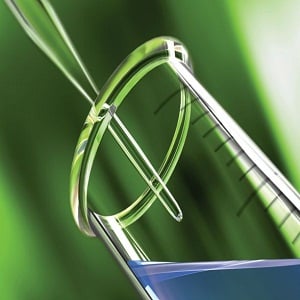Question:
What are the components of a protein lysis buffer and what are their primary functions?
The Protein Man Says:
The processof purifying, analyzing and identifying proteins and their functions all starts with cell or tissue lysis. This step was previously made possible through physical lysis or the use of equipment to disrupt and extractthe particular protein of interest. However, most researchers now prefer the use of suitable protein lysis buffer systems since it provides the best possible results under normal laboratory conditions.
 At present, there is a wide range of products that are being used for protein extraction. There are those that are formulated to maintain the biological activity of proteins (PE LBTM systems) and there are those that can beused to isolate total proteomes or facilitate total denaturing lysis and/or chaotropic extraction. Needless to say, you need to use an appropriate buffer solution for each of these applications.
At present, there is a wide range of products that are being used for protein extraction. There are those that are formulated to maintain the biological activity of proteins (PE LBTM systems) and there are those that can beused to isolate total proteomes or facilitate total denaturing lysis and/or chaotropic extraction. Needless to say, you need to use an appropriate buffer solution for each of these applications.
What Are the Primary Components of Protein Lysis Buffer Systems?
The components of your protein lysis buffer system will largely depend on your target protein and what you aim to accomplish.Basically, you need to choose a buffer system that stabilizes the protein molecules as they are subjected to the various forces designed to separate them from the other cellular components.
In addition, you need to use a buffer solution that provides an ionic environment similar to that of the cell in vivo to maintain the stability of your protein of interest. Taking these things into consideration, most applications necessitate the use of sodium dihydrogen phosphate - disodium hydrogen phosphate, Tris-HCl and HEPES-NaOH.
You may also need to add other compounds to your protein lysis buffer. You may need to add salts (NaCl, KCl, (NH4)2SO4) to maintain or increase the strength of the ionic medium and detergents (sodium dodecyl sulfate or SDS, deoxycholate, Triton X-100) to dissolve the cell membranes and facilitate the release of soluble proteins and other cellular components into the solution.
Some lysis buffers also call for the addition of ligands and/or metal ions, chelating agents, protease and phosphatase inhibitors, glycerol, glucose or sucrose, and other reducing agents to improve the stability of the target protein and keep it in the solution. How can these compounds help you accomplish your goal? That's what we'll discuss in the next post so be sure to come back for more!






